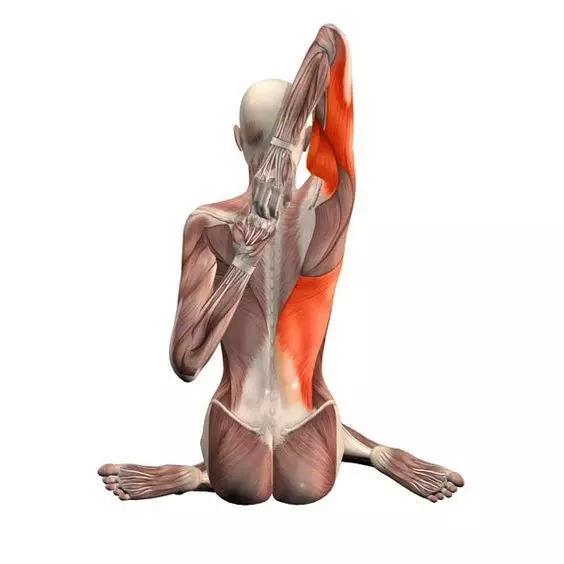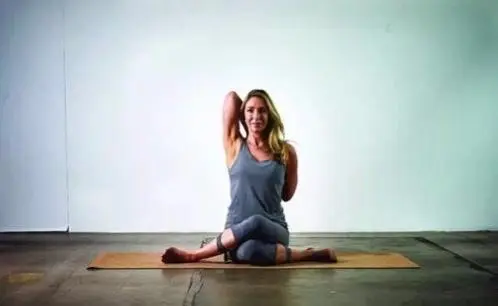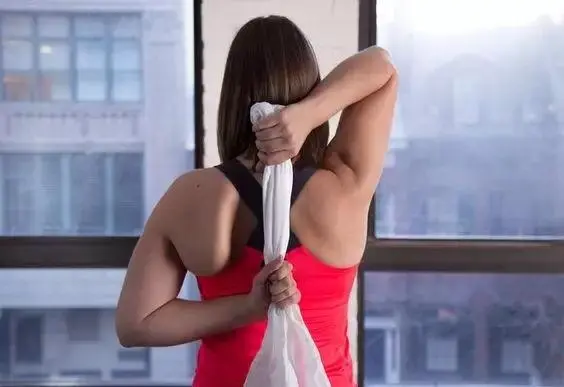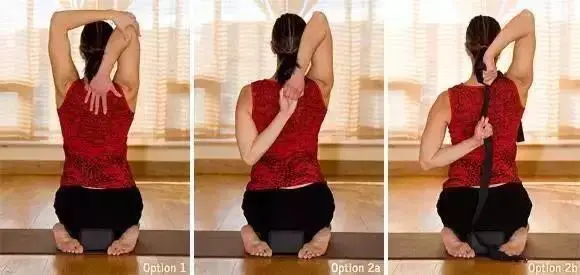What should I do if I can’t buckle my hands behind my back in the yoga cow face pose?
A few days ago, someone left a message, let me talk about the arm, shoulder blade, and the movement pattern and force sequence of the rib cage below the cow face. I almost forgot about this, so let’s talk about it today.
Let’s get to know the beef noodle style first: the picture below

The cow face pose is a very important basic pose for the arms and shoulders. It is almost a must-practice movement in the shoulder opening sequence, and it is also a pose that lays the foundation for headstand and shoulder stand. Everyone found no. The arms of the cow face are prepared for the handstand and shoulder stand. This is why we say that practicing basic asanas is also effective and beneficial.
Let’s take a look at how to practice:
Standing or sitting is fine, with a straight pelvis and an extended spine
Inhale, raise your left hand up over the top of your head, palms inwards; turn your arms from the base of your upper arms, palms back; bend your elbows, with the tips of your elbows facing the ceiling, and place your left hand between your shoulder blades, with your fingertips pointing down.
Inhale, raise the right side of the body horizontally, palm down; turn the arm from the base of the upper arm, the palm is facing back; the arm is back down, bend the elbow, the tip of the elbow is down, the right hand is placed between the shoulder blades, the fingertips are facing up
Hands and fingers clasped together, pulling each other. Can’t buckle up, grab the stretch strap.

Let’s take a look at the details.
arm
The upper arm is mainly used for external rotation. At the beginning, after the arm is raised, ask everyone to do a special rotation from the base of the big arm outward, with the palm facing back, so that the arm can be fully externally rotated.
The lower arm is mainly used for internal rotation. After the arm is raised laterally at the beginning, let everyone rotate inward from the base of the big arm. Keeping the palm facing down is also to allow the arm to fully rotate internally. The picture below is for everyone to see the internal rotation of the lower arm,
Here is a special reminder: start from the base of the arm, not the wrist or elbow. Just as we emphasize that in Triangle Pose the external rotation of the foot is 90 degrees, it is exactly the same as the hip joint movement that occurs from the base of the thigh. If you are not proficient at the beginning, you can only do the action of rotating the big arm alone, or even use the other hand to help yourself. Of course, it is better if there is a small partner to assist.
shoulder blade
The scapula of the upper arm goes up as the arm goes up, and the scapula of the lower arm goes down as the arm goes back. But whether it’s up or down, it moves up and down flat against the back. You can imagine the operation of a high-rise elevator. The box of the elevator will not run out, a corner will not be lifted, and it will not tilt up, down, left and right.
But when many people are doing bull face pose, the shoulder blades feel like they are separated from the back. Especially the lower scapula, it felt as if it was about to pierce the skin and run out of the body.

why do the shoulder blades run all over the place?
When everyone is doing the cow-noodle pose, they focus too much on the hands and whether the hands can buckle these fine branches, and ignore the control and attention to the scapula. Compare Master Iyengar’s shoulder blades with those of the model above, especially below
Everyone, think about whether you will tilt your shoulders and cover your chest when you are doing this pose after you put your palms in place. The various movements are to make your hands clasped or clasped more tightly. What is the state of mountain pose, the arms are rotated, the chest is opened, the shoulder blades are in the right position, all stand aside, and then the hands are buckled first.
This is putting the cart before the horse. Many people ask what should I do if I can’t clasp my hands? If you can’t buckle it, don’t buckle it, first use the extension strap to assist.

ribcage.
The state of the ribcage is open and raised, and the collarbone is also open. Especially the lower arm. Although the lower arm is internally rotated, it does not affect the rearward expansion of the clavicle or the lifting of the ribcage.
Just like when we do a concave or backbend, pull your shoulder blades together, push forward into your ribcage, extend your spine, and lift your ribcage up. These basic points are still the same, don’t throw them away. Take a look at the shoulder bones in this dynamic image

On hold.
In the process of holding, we often deepen and strengthen the asana with the breath. If you understand the strengthening of the cow-noodle style, it means to make more hands, then in the process of preservation, you will try to make more hands and lose everything else. For example, the upper arm is hidden behind the back of the head, the lower shoulder is pulled down, the head is lowered, the ribcage is collapsed… Remember that the two arms of the cow-face pose are always parallel, the upper elbow is facing the ceiling, and the elbow is facing the ceiling. Ground; shoulders flat, ribcage open, shoulder blades adducted.
Read more tips about health and fitness http://www.growmorehealth.com
